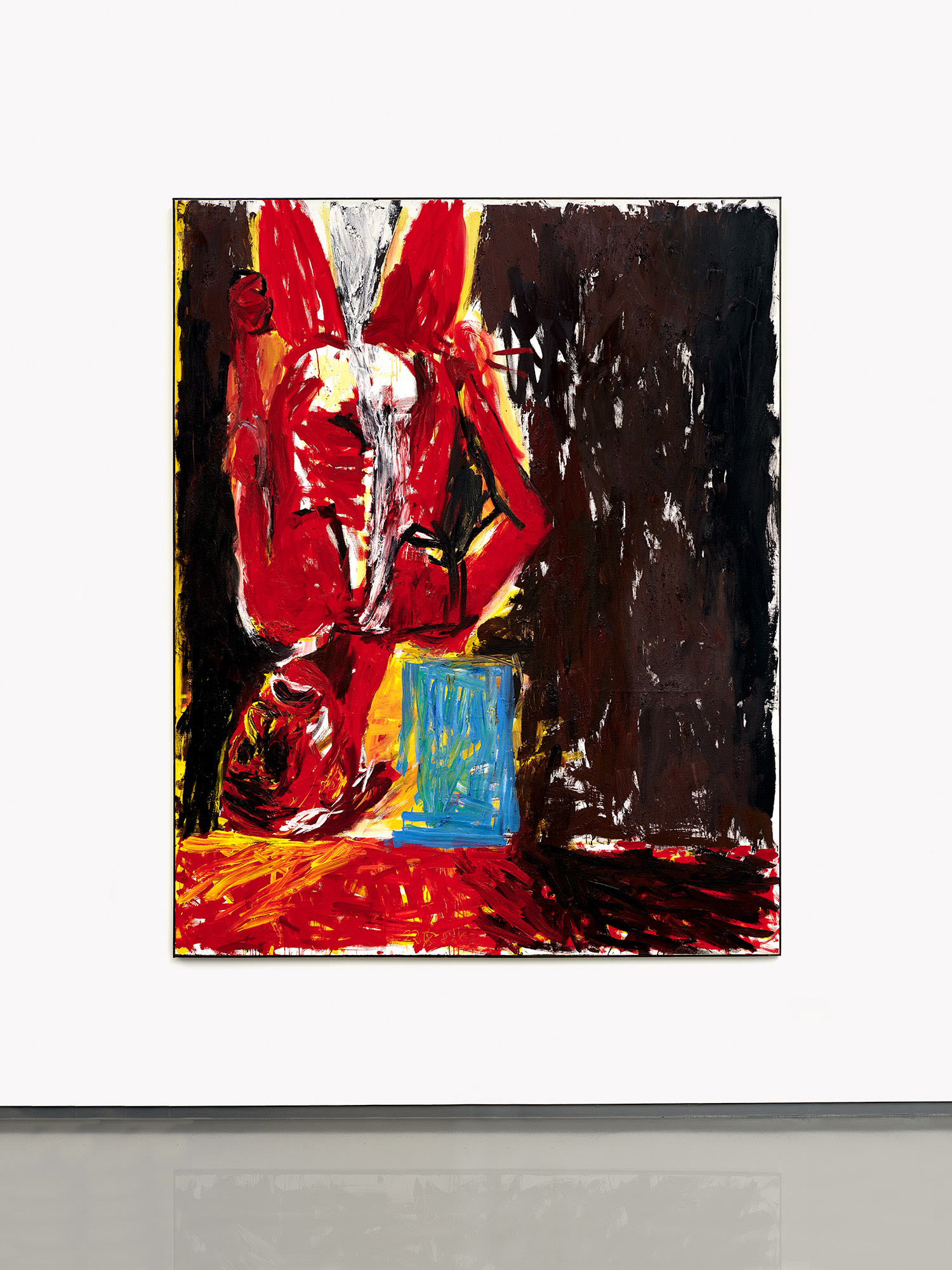



From the Collection of Marcel Brient, Paris
10
Georg Baselitz
Das letzte Selbstbildnis I
signed with the artist's initials and dated ‘22.IX.82 G.B.’ lower centre; further signed, titled and dated 'G. Baselitz das letzte Selbstbildnis I 22.IX.82' on the reverse
oil on canvas
250 x 200 cm (98 3/8 x 78 3/4 in.)
Painted in 1982.